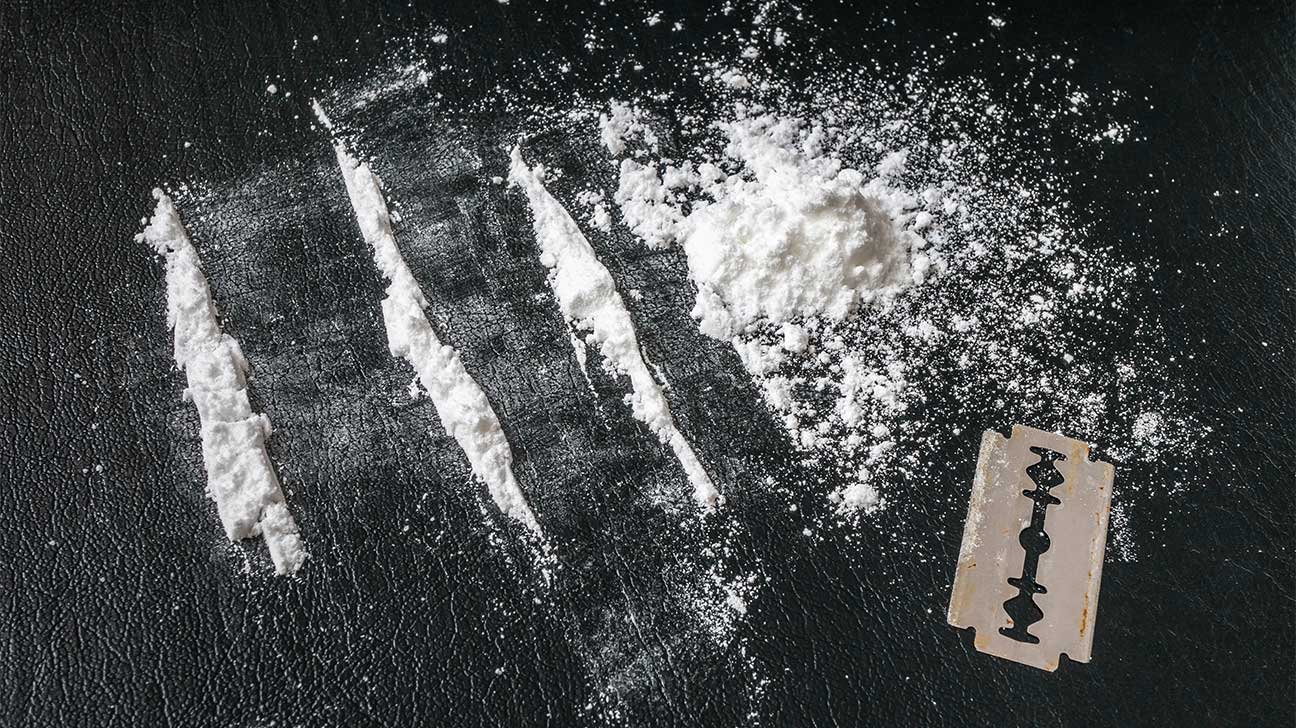
Cocaine is an addictive, illicit drug that comes from the coca plant, which is native to South America. Although cocaine is sometimes used as an anesthetic in medical settings, it is illegal for recreational use in the United States.
Common questions people have about cocaine include:
- What does cocaine taste like?
- What does cocaine look like?
- Does crack taste the same as cocaine?
- What does cocaine do?
Snorting, injecting, smoking, or swallowing cocaine can cause intense effects on mood, behavior, and the body.
The taste and appearance of cocaine can vary according to the form of cocaine, where it comes from, and whether it’s been mixed with other adulterants.
Identifying Cocaine
Cocaine is a drug that is native to the South American countries of Colombia, Peru, and Bolivia. Most cocaine production occurs in Columbia.
Cocaine can appear in the form of:
- coca leaves
- coca paste
- white, crystalline powder
- white rock-like crystal
Cocaine can also appear flaky, or come in the form of white nuggets or bricks. Cocaine is derived from the green coca leaves of certain coca plants. In South America, coca leaves may be brewed for tea, and can be processed into a coca paste form.
What Cocaine Tastes Like
Cocaine tastes bitter in all of its forms.
The taste of cocaine can vary depending on:
- what form it is in
- purity
- the addition of certain chemicals, additives, or cutting agents during the manufacturing and distribution processes
What Ingredients Are Added To Cocaine?
Much of the cocaine that is sold on the street in the U.S. is diluted or cut with other ingredients, also known as adulterants, fillers, or cutting agents.
There are also a number of chemicals that are involved in the process of manufacturing cocaine.
How Cocaine Is Made
Cocaine is extracted from the leaves of coca plants. From the initial extraction, the drug is processed into cocaine sulfate, then cocaine hydrochloride to create a fine, white powder.
Chemicals involved in the manufacturing process for powder cocaine can alter the taste, smell, and appearance of cocaine.
Chemicals used to manufacture cocaine include:
- baking soda
- ammonia
- gasoline
- ether
- acetone
- potassium permanganate
- sulfuric acid
Adulterants Added To Powder Cocaine
The taste of cocaine can also depend on whether it’s been processed, or diluted, with additional adulterants. As a result, cocaine may have additional flavors or taste salty as well as bitter.
Drug dealers may cut their supply of cocaine with other substances in order to dilute the cocaine, decrease its purity, and increase their profits.
Cocaine may be cut with:
- flour
- talcum powder (talc)
- cornstarch
- sugar
- laundry detergent
- caffeine
- phenacetin
- levamisole
- hydroxyzine
- lidocaine
- laxatives
- creatine
Cutting agents may alter how cocaine smells, its appearance, and the taste of cocaine.
In addition, cocaine is sometimes cut with other drugs, such as amphetamine, heroin, fentanyl, marijuana, and psychedelics such as MDMA and PCP.
What Does Tasting Cocaine Feel Like?
Putting cocaine in the mouth can create a numbing sensation and taste grainy or powdery. Some people may rub cocaine powder on their gums to test its purity.
Cocaine that hasn’t been cut with other substances—i.e. has a high purity level—can numb the gum line in small amounts.
If other local anesthetics are cut with cocaine, however, this can also numb the gums and not necessarily indicate a high purity level.
Does Crack Taste Different Than Cocaine?
Crack cocaine, or freebase, can taste different than powdered cocaine. This is because it undergoes a different manufacturing process.
Crack cocaine is made by stripping cocaine of cocaine hydrochloride. Crack is more potent than powdered cocaine and has a low tolerance to heat, which makes it smokable.
Freebase cocaine can be clumpy in appearance, or can come in the form of small rocks. Crack cocaine is generally smoked to achieve rapid, euphoric effects.
Dangers Of Cocaine Use
Cocaine is a powerful stimulant. It is often abused for its euphoric effects and its ability to increase focus and alertness in some people. It is also highly addictive.
Adverse side effects of cocaine can include:
- rapid heart rate
- irregular heartbeat
- high blood pressure
- high body temperature
- psychosis (seeing or hearing things that aren’t there)
- aggressive or violent behavior
- brain damage
- kidney failure
- seizures
- stroke
- difficulty breathing
- heart attack
Taking high doses of cocaine, or using cocaine with other drugs, can cause drug overdose. Drug overdose can be life-threatening and may require immediate medical attention.
Treatment For Cocaine Addiction
Using cocaine or smoking crack can be a sign of drug abuse and addiction. Cocaine abuse can have short-term and long-term effects on health and wellbeing.
Treatment for cocaine addiction can include:
- detox
- inpatient rehab
- outpatient rehab
- behavioral therapy
- sober living programs
- recovery support groups
If you or someone you know is addicted to cocaine, help is available. You don’t have to face this alone. Call our helpline today to learn more about cocaine addiction and find treatment near you.
Addiction Resource aims to provide only the most current, accurate information in regards to addiction and addiction treatment, which means we only reference the most credible sources available.
These include peer-reviewed journals, government entities and academic institutions, and leaders in addiction healthcare and advocacy. Learn more about how we safeguard our content by viewing our editorial policy.
- National Institute on Drug Abuse (NIDA)—Cocaine DrugFacts
https://www.drugabuse.gov/publications/drugfacts/cocaine - United Nations Office on Drugs and Crime (UNODC)—Recommended methods for the Identification and Analysis of Cocaine in Seized Materials
https://www.unodc.org/unodc/en/scientists/recommended-methods-for-the-identification-and-analysis-of-cocaine-in-seized-materials.html - U.S. Drug Enforcement Administration (DEA)—Cocaine
https://www.dea.gov/factsheets/cocaine


